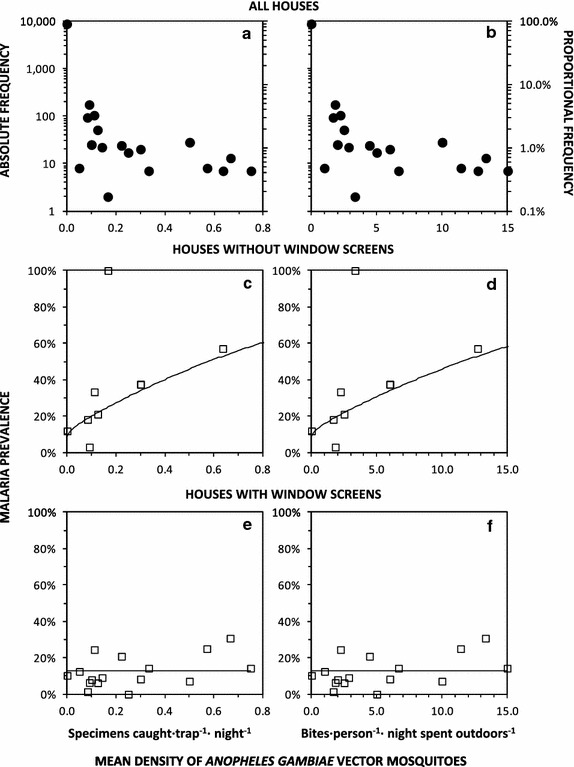Fig. 6.

The frequency distribution and dependence of Plasmodium falciparum malaria prevalence upon densities of Anopheles gambiae sensu lato in Dar es Salaam. The number and proportion (a, b) of RDT-tested human subjects, as well as the proportion of those which were diagnosed as infected with malaria in houses with (e, f) and without (c, d) window screening, are plotted against vector density, as measured by community based surveillance with Ifakara tent traps (a, c, e) and converted into the estimated equivalent outdoor human landing catch (b, d, f). Continuous lines represent the best fit of models relating malaria infection prevalence to vector density in houses with (c, d) and without (e, f) window screens
